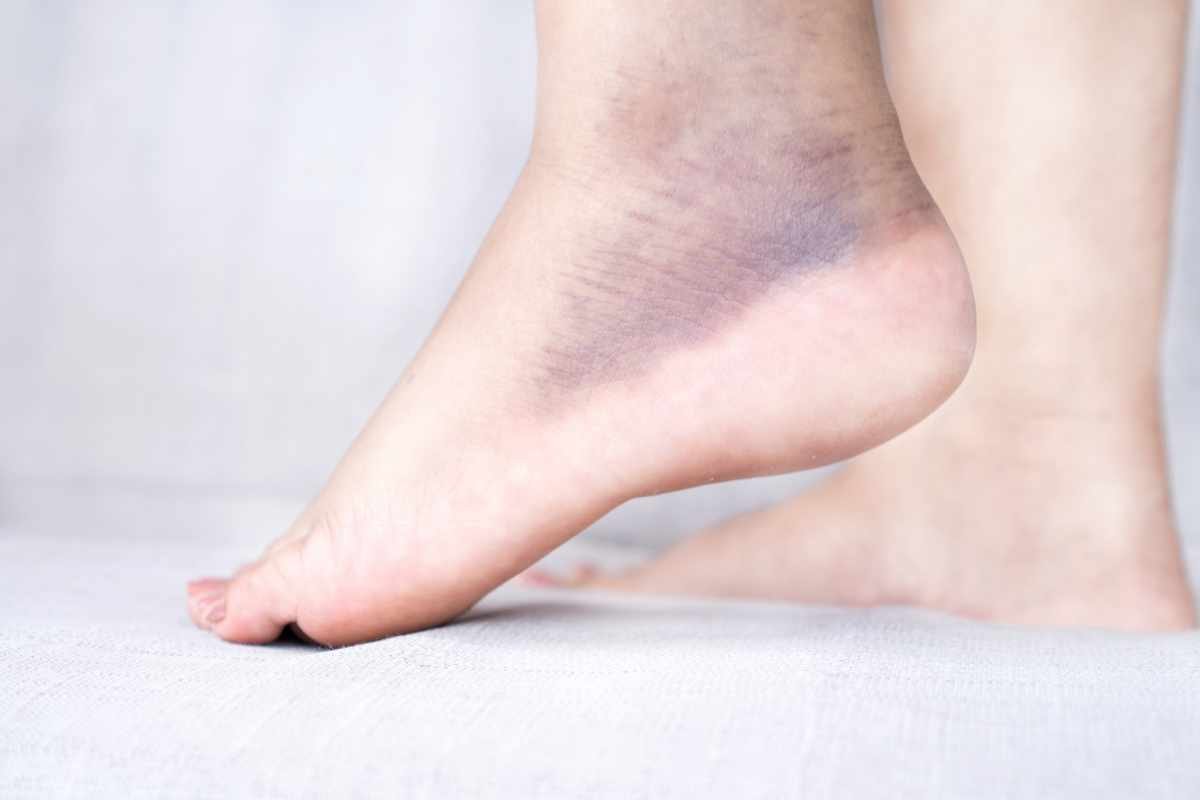Ankle injuries are common, especially among athletes and active individuals. While the more familiar “inversion” sprain, where the ankle rolls inward, dominates the spotlight, the eversion ankle sprain is a less common but equally challenging condition that affects the stability and functionality of the ankle. Unlike inversion sprains, eversion ankle sprains occur when the ankle rolls outward, leading to potential damage to the ligaments on the inside of the ankle. Understanding this type of injury is crucial for anyone engaged in physical activity, whether in sports, fitness, or daily life.
In this article, we’ll dive deep into the world of eversion ankle sprains, exploring what they are, how they occur, the symptoms you should look out for, and the best strategies for prevention and recovery. Whether you’re an athlete seeking to minimize your risk or someone recovering from an injury, this comprehensive guide will equip you with the knowledge you need to protect your ankles and stay active.
What is an Eversion Ankle Sprain?
An eversion ankle sprain occurs when the foot twists outward, causing the ligaments on the inside of the ankle to stretch or tear. The primary ligament affected is the deltoid ligament, a strong band of tissue that helps stabilize the ankle joint. This injury is less common than its counterpart, the inversion ankle sprain, due to the inherent strength of the deltoid ligament and the mechanics of most ankle injuries.
In an eversion ankle sprain, the force that causes the ankle to twist outward often comes from a sudden and unexpected impact or a misstep during physical activity. This type of sprain is particularly prevalent in sports that involve running, jumping, or sudden changes in direction, such as soccer, basketball, and tennis.
Causes of Eversion Ankle Sprain
Understanding the causes of an eversion ankle sprain is crucial for prevention. Several factors can contribute to the likelihood of experiencing this type of injury:
1. Improper Footwear
Wearing shoes that do not provide adequate support can increase the risk of an eversion ankle sprain. Footwear that lacks proper arch support or has an overly rigid sole can lead to instability, making it easier for the foot to roll outward during movement.
2. Uneven Surfaces
Running or walking on uneven or unstable surfaces can significantly increase the risk of this type of ankle sprain. Activities like hiking on rocky trails or playing sports on poorly maintained fields can lead to unexpected twists and turns, resulting in injury.
3. Previous Ankle Injuries
If you’ve previously suffered from an ankle injury, particularly a sprain, your ankle may be more susceptible to future injuries, including eversion ankle sprains. Weakened ligaments and reduced proprioception (the body’s ability to sense its position) can make re-injury more likely.
4. Overpronation
Overpronation, where the foot rolls inward excessively when walking or running, can place undue stress on the inner ligaments of the ankle. This biomechanical issue can make it easier for the ankle to roll outward, leading to an eversion sprain.
5. Sudden Impact or Trauma
A sudden impact, such as a direct blow to the ankle or a fall, can cause the ankle to twist outward rapidly, leading to an eversion sprain. This is common in contact sports or accidents where the ankle is forced into an unnatural position.
Symptoms of an Eversion Ankle Sprain

Identifying this early is key to effective treatment and recovery. The symptoms of this type of sprain can vary depending on the severity of the injury but generally include:
1. Pain on the Inside of the Ankle
One of the hallmark symptoms of an eversion ankle sprain is pain on the inside of the ankle, where the deltoid ligament is located. This pain may be sharp and immediate or develop gradually after the injury.
2. Swelling and Bruising
Swelling around the inside of the ankle is common following an eversion ankle sprain. Bruising may also appear, indicating damage to the blood vessels in the area.
3. Difficulty Bearing Weight
Depending on the severity of the sprain, you may find it difficult or impossible to bear weight on the injured ankle. This is due to the pain and instability caused by the damaged ligaments.
4. Reduced Range of Motion
An eversion ankle sprain can lead to a reduced range of motion in the ankle joint. You may find it difficult to move your foot up and down or side to side without experiencing pain or stiffness.
5. Instability
After an eversion ankle sprain, the ankle may feel unstable, as if it could give way at any moment. This is due to the damage to the ligaments that help stabilize the joint.
Diagnosis of Eversion Ankle Sprain
If you suspect that you have sustained an eversion ankle sprain, it is important to seek medical attention promptly. A healthcare professional will conduct a thorough examination to assess the extent of the injury and rule out other potential issues, such as fractures or dislocations.
1. Physical Examination
During a physical examination, your doctor will assess the swelling, bruising, and range of motion in your ankle. They may also perform specific tests, such as the “talar tilt test,” to evaluate the stability of the deltoid ligament.
2. Imaging Tests
Imaging tests, such as X-rays or MRI scans, may be necessary to confirm the diagnosis and determine the severity of the injury. X-rays can help rule out fractures, while an MRI can provide detailed images of the soft tissues, including the ligaments.
Treatment of Eversion Ankle Sprain

The treatment for an eversion ankle sprain will depend on the severity of the injury. In most cases, a combination of rest, physical therapy, and supportive measures will be sufficient to promote healing and restore function.
1. RICE Method
For mild to moderate eversion ankle sprains, the RICE method (Rest, Ice, Compression, Elevation) is the first line of treatment:
- Rest: Avoid putting weight on the injured ankle to prevent further damage.
- Ice: Apply ice packs to the affected area for 15-20 minutes several times a day to reduce swelling.
- Compression: Use an elastic bandage or ankle brace to provide support and minimize swelling.
- Elevation: Elevate the injured ankle above the level of your heart to reduce swelling and promote drainage of fluids.
2. Physical Therapy
Physical therapy plays a crucial role in the recovery from an eversion ankle sprain. A physical therapist will design a personalized program that includes exercises to improve strength, flexibility, and balance in the ankle. These exercises are essential for restoring function and preventing future injuries.
3. Medications
Over-the-counter pain relievers, such as ibuprofen or acetaminophen, can help manage pain and reduce inflammation associated with an eversion ankle sprain. In some cases, your doctor may prescribe stronger medications if needed.
4. Ankle Support
Wearing an ankle brace or taping the ankle can provide additional support during the recovery period. This can help stabilize the joint and prevent further injury while the ligaments heal.
5. Surgery
In severe cases where the deltoid ligament is completely torn or if the ankle remains unstable despite conservative treatment, surgery may be necessary. Surgical options include ligament repair or reconstruction to restore stability to the ankle.
Preventing Eversion Ankle Sprains

While it’s impossible to completely eliminate the risk of an eversion ankle sprain, there are several steps you can take to reduce your chances of sustaining this type of injury:
1. Strengthening Exercises
Regularly performing exercises that strengthen the muscles around the ankle can help improve stability and reduce the risk of sprains. Focus on exercises that target the calf muscles, as well as the muscles that support the inner and outer aspects of the ankle.
2. Flexibility Training
Maintaining flexibility in the ankle joint is essential for injury prevention. Incorporate stretching exercises into your routine, particularly stretches that target the Achilles tendon and the muscles on the inside of the ankle.
3. Proper Footwear
Wearing appropriate footwear is crucial for ankle stability. Choose shoes that provide good arch support, cushioning, and a snug fit to minimize the risk of your foot rolling outward during activity.
4. Balance Training
Improving your balance can significantly reduce the risk of an eversion ankle sprain. Balance exercises, such as standing on one leg or using a balance board, can help enhance proprioception and ankle stability.
5. Gradual Progression
If you’re returning to physical activity after an injury or a period of inactivity, take a gradual approach to increase the intensity and duration of your workouts. This allows your body to adapt and strengthens the muscles and ligaments around the ankle.

Ottawa Ankle Rules: A Comprehensive Guide to Assessing Ankle Injuries
In this article, we will delve into the details of the Ottawa Ankle Rules, their significance in clinical practice, and how they contribute to efficient and accurate diagnosis and management of ankle injuries.
Recovery Time for Eversion Ankle Sprains
The recovery time for an eversion ankle sprain varies depending on the severity of the injury. Mild sprains may heal within 2-4 weeks with proper care, while more severe sprains could take several months to fully recover. It’s important to follow your healthcare provider’s recommendations and not rush the healing process, as returning to activity too soon can lead to re-injury.
During recovery, focus on gradually reintroducing weight-bearing activities and continuing physical therapy exercises to regain strength and flexibility in the ankle. Even after the initial healing phase, continuing a maintenance routine of strengthening and flexibility exercises can help prevent future sprains.
Conclusion
An eversion ankle sprain is a less common but potentially serious injury that can impact your mobility and overall quality of life. By understanding the causes, symptoms, and treatment options for this type of sprain, you can take proactive steps to protect your ankles and ensure a full recovery if an injury does occur. Remember, prevention is key—regular exercise, proper footwear, and attention to technique during physical activity can go a long way in keeping your ankles healthy and injury-free. Whether you’re an athlete or someone who enjoys staying active, being aware of the risks and taking the necessary precautions can help you avoid the pain and inconvenience of an eversion ankle sprain.








